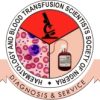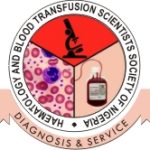Joseph E. Udosen, Euphoria C. Akwiwu, Valerie E. Njar, David U. Akpotuzor, Josephine O. Akpotuzor
AJLHTS: Original Paper
Abstract
Introduction: Anaemia, leucopenia and thrombocytopenia are at the forefront of haematological derangements encountered in the management of breast cancer. However, there is a gap in knowledge regarding their degree of occurrence at different stages of chemotherapy.
Methods: Longitudinal design and purposive sampling technique were adopted to enroll 50 adult female breast cancer patients who were accessing chemotherapy at the University of Calabar Teaching Hospital in Calabar, Cross River State of Nigeria. Ethical approval and informed consent were duly obtained. The blood cell counts were carried out by automation. Frequencies of anaemia, leucopenia and thrombocytopenia were calculated after applying cut-off point using age- and gender–specific refence ranges (<120 g/l of Haemoglobin concentration for anaemia, <4.0 x 109/1 of total white blood cell count for leucopenia and <150 x 10‘/1 of platelet count for thrombocytopenia).
Results: A greater number of the subjects had anaemia with prevalence ranging from 78% at the onset to 100% by the fifth course. Leucopenia ranged from 14% at the beginning to 100% by the third course. Thrombocytopenia was not present at pre-chemotherapy stage but appeared slightly (4%) during the assessment for second treatment course and rose to 55% at the last assessment.
Conclusion: This study observed increasing proportions of cytopenia in association with progressing chemotherapy. There is high prevalence of anaemia in breast cancer even before commencement of chemotherapy, while leucopenia develops more rapidly during chemotherapy.

